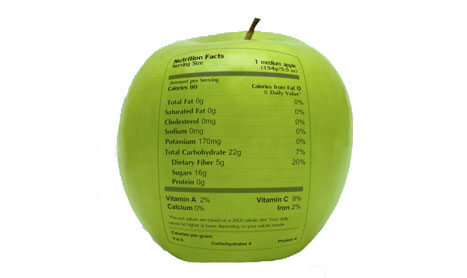 Thanks to food industry regulations, growing health concerns and the media, we’re gradually starting to sit up and take notice of exactly what is in our food. However, when it comes to reading food labels, it can still be confusing to interpret the information provided on the packaging.
Thanks to food industry regulations, growing health concerns and the media, we’re gradually starting to sit up and take notice of exactly what is in our food. However, when it comes to reading food labels, it can still be confusing to interpret the information provided on the packaging.
Here’s a quick guide to food additives and e-numbers to help you read ingredient lists:
What are additives?
Additives are extra ingredients that have been added into food for a number of reasons, including improving the colour or the flavour of the product, or extending its shelf life.
You may have noticed when reading an ingredients list that some processed foods, such as cheese corn chips, may not actually have any cheese in them. Instead there will be a list of various additives that provide the cheesy taste.
Additives can be natural or artificial in origin, and can be listed with either an e-number or a name, such as Sweetener (Aspartame), or Sweetener (E951).
What are E-numbers?
E-numbers are reference code numbers given to different chemicals that have undergone safety tests and been approved for use as food additives throughout the European Union. These are usually shown as numbers with or without and ‘E’ before them (for example, E101 or just 101).
Unfortunately, if the actual additive names are ‘disguised’ on a label and only the e-numbers are used, it’s hard to know what’s actually in your food unless you have all the numbers memorised; and there are a lot of them!:
E100 – 109 | Colours
Make your food look more appealing
Example: E102 – Tartrazine, an artificial yellow food colouring
E200 – 299 | Preservatives
Extend the shelf life of your food and delay formation of mould etc.
Example: E252 – Potassium nitrate, used in cured meats such as bacon and ham to stop bacteria from growing.
E300 – 399 | Acidity regulators and antioxidants
Adjust the acidity level in food for sour tastes and help prevent fats and oils from deteriorating.
Example: E330 – Citric acid, used to add a sour taste to foods and drinks.
E400 – 499 | Thickeners, stabilisers and emulsifiers
Thickens foods, prevents water and oil in certain foods from separating.
Example: E440 – Pectin, used as a gelling agent in jams.
E500 – 599 | PH regulators and anti-caking agents
Prevents powdered/granulated ingredients from ‘caking’ and joining together such as table salt, flours or sugar products.
Example: E551 – Silicon dioxide, prevents table salt from caking.
E600 – 699 | Flavour enhancers
Improve flavours
Example: E621 – Monosodium glutamate, or MSG, used in soups and sauces.
E900 – 999 | Miscellaneous
This category includes additives such as sweeteners and glazing agents that make foods look more appealing.
Example: E954 – Saccharin, used as an artificial sweetener.
E1000+
Additional/new chemicals that don’t fall into other categories.
Are these things good or bad for me?
Unless you have a negative reaction to a specific additive, you generally won’t notice you’re ingesting additives. The problem with not using ‘real’ ingredients and using additives instead, is that with all the processed, pre-packaged and takeaway foods available, we may be having more than our bodies should ideally be handling.
To identify clean, unprocessed foods, aim for products with shorter ingredient lists (they generally have fewer or no additives), and think twice about purchasing a product if you can’t recognise some of the ingredients included.
For more information, visit the Food Standards Australia New Zealand website.
Image / FreeDigitalPhotos.net – Stuart Miles

